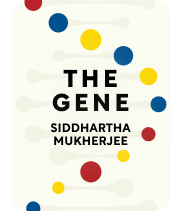

This article is an excerpt from the Shortform book guide to "The Gene" by Siddhartha Mukherjee. Shortform has the world's best summaries and analyses of books you should be reading.
Like this article? Sign up for a free trial here.
How was DNA discovered? Why did scientists initially dismiss DNA as a carrier of genetic information?
Scientists discovered nucleic acids (DNA and RNA) in the 1920s, but they decided that nucleic acids were much too simple to carry genetic information. Therefore, they dismissed those molecules in favor of studying proteins, which were much more complex.
Keep reading to learn how DNA was discovered.
The Discovery of DNA
How was DNA discovered? Although DNA was discovered in the 1920s, it would remain largely unappreciated until the 1940s, when molecular biologists Oswald Avery, Colin MacLeod, and Maclin McCarty demonstrated that DNA, not proteins, carries genetic information. Oswald published their findings in 1944.
After scientists learned what DNA is, naturally, what it does. In other words, what does it actually mean that DNA “carries genetic information?”
Biologists George Beadle and Edward Tatum discovered the answer in 1945: DNA contains instructions for building the proteins that make up just about everything in our bodies.
DNA’s Four Nucleotides
DNA itself is made of four base chemicals called nucleotides: adenine (A), cytosine (C), guanine (G), and thymine (T). Mukherjee tells us that all genes, regardless of species, consist of those four nucleotides in various combinations. Nucleotides have two key binding sites that make them perfect for creating chains of DNA: One site at the “bottom” of the molecule where the next nucleotide attaches itself, and one that binds to the other DNA chain of the double helix.
(Shortform note: Some virus genomes are made of RNA, not DNA, a fact that Mukherjee himself puts in a footnote much later in The Gene. However, DNA is a more stable molecule than RNA, and it’s easier to repair in case of damage. That’s why nearly all life on Earth has evolved with DNA. In theory, there could be complex multicellular organisms with RNA genomes, but so far, no such species has been discovered.)
In 1953, molecular biologists James Watson and Francis Crick—using data from another scientist named Rosalind Franklin, who went uncredited in their paper—developed the first accurate model of DNA, the now-famous “double helix” model.
While creating that model, Watson also discovered that the four nucleotide bases are actually two pairs: T is always linked to A, and C is always linked to G. That happens because those nucleotide pairs chemically bond to one another and thereby hold the DNA molecule together.
| Form Fits Function “Form fits function” is an old maxim of biology. It means that because all the parts of our bodies work together like a complex organic machine, you can deduce what each part of that machine does from how it’s built—for example, we can tell that red blood cells carry oxygen because they have binding sites for oxygen molecules. Scientists were using “form fits function” logic when they dismissed nucleic acids in favor of proteins. They were looking for a type of molecule that could encode very complicated data (the blueprints for an entire human body), and proteins can have extremely complex structures, so they seemed like more likely candidates than the relatively simple nucleic acids. |

———End of Preview———
Like what you just read? Read the rest of the world's best book summary and analysis of Siddhartha Mukherjee's "The Gene" at Shortform.
Here's what you'll find in our full The Gene summary:
- What genes are and how they work, explained in simple terms
- The history of gene discovery, dating back to the 1800s
- What the future of genetic engineering looks like






